What Art Movement Is Knight Death and the Devil From
Knight Death and the Devil

- Engagement of Creation:
- 1513
- Height (cm):
- 24.xl
- Length (cm):
- 19.10
- Created by:
- Knight Decease and the Devil Page's Content
- Story / Theme
- Inspirations for the Work
- Assay
- Critical Reception
- Related Paintings
- Locations Through Time - Notable Sales
- Creative person
- Art Period
- Bibliography
-

Knight Death and the Devil
-

Leonardo da Vinci
From 1512 to 1520 Albrecht Durer began to explore the deep recesses of Classical antiquity, drawing on his time spent in Italian republic. The Knight, Decease and the Devil copper engraving was 1 of iii works he produced that are still widely regarded today as his 'Master Engravings'.
Knight, Death and the Devil was among the first of these main works ((meisterstiche), and together with St. Jerome in His Study and Melencolia I, it was based on Durer'due south beloved and appreciation of humanist writer Cornelius Agrippa who defined mood disorder into iii categories: morality, theologically and intellectually. Durer'due south engraving reflect that respectively.
Decease is portrayed as property an hourglass and with the mythical crown of serpents but as he touches the armor of the Knight the latter is undeterred by Death's presence. Whilst his time has almost past the Knight remains unshaken and his dog runs through to protect his master from the Devil.
Created in his workshop when he had returned from his second trip to Italy in 1507, these masterworks were preceded by some of his all-time-known paintings, including Adam and Eve and Assumption of the Virgin.
Durer had indulged himself in the work of Leonardo da Vinci and this is where the proportions for the horse come into play.
-

Desiderius Erasmus
Knight, Decease and the Devil is likely to have been inspired by the Bible and biblical preaching equally the engraving is of a Christian knight riding through a forest flanked by both the devil and death.
Created in a Gothic style, the landscape is Nordic and dour and this is believed to be partly due to Durer's familiarity with Desiderius Erasmus'southward 'Enchiridion militis Christiani' which translates equally the 'Handbook of a Christian soldier'.
Erasmus was a theologian and humanist from the netherlands and was in his early on 40s when this engraving was created. Philosophical by nature he had published the book some x years before and information technology was one of the key things that the Dutchman is remembered for. The plot of the story is an entreatment to Christians to human action and call up their faith during life.
Albrecht Durer's evident interest in the works of humanist Cornelius Agrippa was a key inspiration in all three of his copper engravings and this was the piece that reflected the morality of life.
-

Knight Death and the Devil
-

Knight Death and the Devil
-

Knight Death and the Devil
-

Knight Death and the Devil
-

Knight Death and the Devil
Technique:
To produce Knight, Death and the Devil Durer would have used a burin, which is a very abrupt tool, held in his palm to push through the copper plate. Twisting away the copper you lot tin can see how the lines that are engraved evidence idiosyncrasies that allows them to be distinguished between drypoint and etched lines.
Using the burin is good for introducing stabs of triangular characteristics to the work and this is particularly evident in the helmet of the Knight.
One of the most skilled artists of the Renaissance, Durer had a sophisticated touch and looking at the horse's neck shape it is clear how he used engraved lines in a similar way to topological maps when describing forms.
Features:
The artist's horse is a feature of the work that shows a link to da Vinci and is a reflection on both the period and Durer'south huge interest in anatomy and natural sciences. The trunk is masterfully rendered by geometric shapes to create a powerful image of the animal.
Texture:
The surfaces and textures in this engraving are both astounding and finished to perfection. There is a clear stardom between the Knight's armor, his leather boot, the fur of the dog and the horse - showcasing Durer's brilliance in this medium.
Form:
Using a Gothic fashion the whole engraving takes many forms that effortlessly alloy to ane another. The horse was created using multiple interlocking curves and besides the chin of the Knight is woven in line with his helmet.
Signature:
Knight, Death and the Devil is signed and dated past Albrecht Durer and at the bottom left of the work was the inscription 'S. 1513'.
-

Moritz Thausing
-

Knight Decease and the Devil
A huge artist at this time, Durer'due south maturity and impeccable piece of work was clear for all to see and his reputation soared across Europe.
Knight Decease and the Devil was role of the trio that he created in guild to earn more money and copies were sent to many illustrators, artists and engravers, and this shows the positive reception he received.
Knight Expiry and the Devil is a clever work of emblematic composition and fine art historian Raymond Stites states that Durer had a "tangible idea in a globe of changing forms. " By this he was referring to the contrast of the Knight and his horse.
Interpretations of this work accept been wide and varied only 19th century Austrian fine art historian Moritz Thausing believes the design illustrates the '4 temperaments'. Thausing argues that Knight, Death and the Devil represents sanguinity, which is an extroverted personality.
Most art critics agree that this engraving is a celebration of the Christian organized religion and as well the evidence of the upsurge in Humanism at this fourth dimension across northern Europe which was boot-started past Durer following his trips to the Renaissance capital of Italy.
Sten Karling, a mid-to-late 1900s writer and analyst has a somewhat different view. He claims that instead of the Knight showing celebrity it did, in fact, draw a 'robber businesswoman'. By this Karling was saying that due to a significant lack of religious and Christian symbols, Knight, Death and the Devil could not possibly be based on the Bible.
Similarly, the fox has its tail wrapped effectually the lance of the Knight and in Greek fable this is a symbol of five things; Greed, Cunning, Treachery, Lust or Whoring.
The original Knight, Death and the Devil no longer survives but there are copies in many major museums and galleries including the Museum of Mod Art, New York and the British Museum, London.
-

Adam and Eve
In 1513 Albrecht Durer was 42 years old and working in his workshop in Nuremberg. He was a mature creative person with an indisputed reputation across Europe. He produced Knight, Death and the Devil having recently returned from his second trip to Italy.
Inspired by Giovanni Bellini, Leonardo da Vinci and Raphael Durer began to make copper engravings, challenge that painting just didn't bring in enough money.
-

Tribute Money
Knight, Death and the Devil was created in the outset quarter of the 16th century as the Renaissance was in full flow beyond Europe. New techniques including proportion and linear perspective had been developed.
Taking ideas for his engravings from the works of Plato as well as various personality traits and other sources, Knight, Death and the Devil was the first copper engraving Durer created and it was copied and published across Europe making huge waves in the fine art world.
To read more about Albrecht Durer please choose from the following recommended sources.
• Bartrum, Giulia. Albrecht Dürer and his Legacy. British Museum Press, 2002
• Berger, John. Albrecht Durer: Watercolours and drawings. Taschen, 1994
• Durer, A. & Kurth, W. Complete Woodcuts. Dover Publications Inc. , 2000
• Durer, Albrecht. The Drawings. Dover Publications Inc. , 1970
• Heaton, Mary Margaret. The History of the Life of Albrecht Dürer of Nürnberg: With a translation of his messages and journal, and some account of his works. Adamant Media Corporation, 2005
• Panofsky, Due east. The Life and Art of Albrecht Durer (Princeton Archetype Editions). Princeton University Press, 2005
• Wolf, Norbert. Albrecht Durer. Prestel, 2010
Source: https://www.artble.com/artists/albrecht_durer/engravings/knight_death_and_the_devil

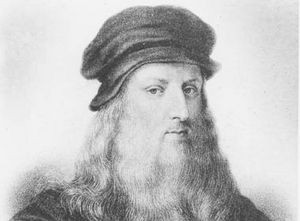


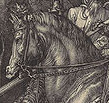



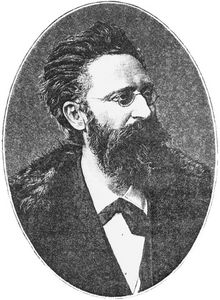

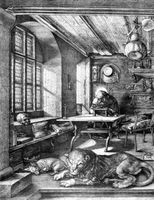
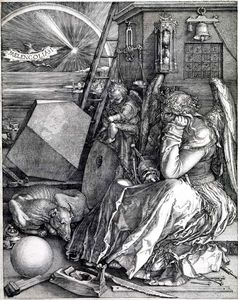
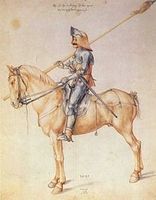
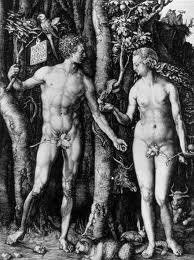
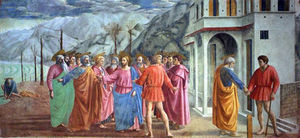
0 Response to "What Art Movement Is Knight Death and the Devil From"
Post a Comment